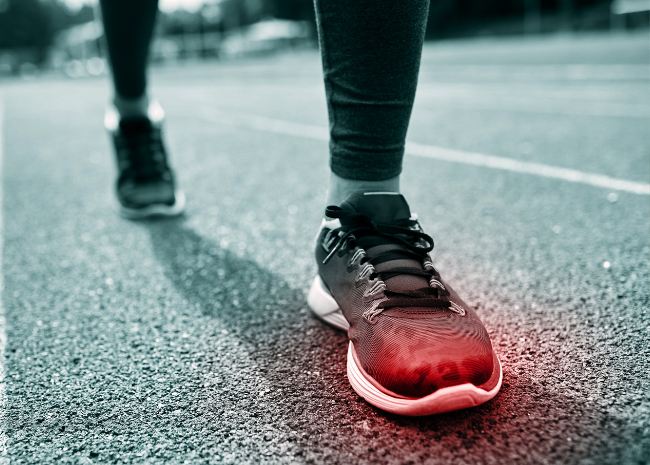
Have you hit a bump in the road with a pesky running injury? Don’t worry — in this article, we’ll guide you through the twists and turns of healing and recovery.
Understanding the duration of your journey is crucial, so let’s lace up our sneakers and dive right in!
Factors That Shape Your Recovery Path
Let’s chat about why some injuries seem to linger longer than others. It’s not just about the injury itself; a variety of factors come into play, each contributing to the unique timeline of your healing process.
1) Severity: The Name of the Game
First things first: how severe is your injury? A minor tweak might have you back on your feet in no time, but a full-blown stress fracture? Well, that could require a bit more TLC and patience.
2) Your Body’s Unique Story
We’re all unique beings and have our own stories to tell. Your personal physiology and overall health can significantly influence how quickly—or slowly—you bounce back from an injury. Embrace your body’s journey and trust in its innate healing abilities.
3) Timing Is Everything
Ever heard the phrase “the early bird catches the worm”? Well, it holds true for injury recovery too! Seeking prompt treatment and diving into rehabilitation efforts can set you on the fast track to recovery. Don’t hesitate to reach out for help when you need it.
4) Consistency Is Key
Think of your recovery plan as a roadmap—it’s essential to stick to it! Consistently following your prescribed rehabilitation exercises and treatment protocols can help pave the way for a smoother, speedier recovery journey.
5) Lifestyle Choices Matter
Believe it or not, your daily habits can wield significant influence over your recovery timeline. Fueling your body with nourishing foods, prioritizing restorative sleep, and managing stress levels can all play starring roles in your healing process.
The Symphony of Healing: Understanding the Stages
Ever wondered what’s going on beneath the surface as you recover? Let’s take a closer look at the three-part process of healing: inflammation, proliferation, and remodeling.
Phase 1: Inflammation: Picture this phase as the initial response team rushing to the scene of the injury. Inflammation kicks off the healing process by clearing away debris and laying the groundwork for repair.
Phase 2: Proliferation: Now it’s time to roll up our sleeves and get to work! During this phase, your body’s cellular construction crews are hard at work, laying down fresh tissue and rebuilding what was damaged.
Phase 3: Remodeling: The final touches! Think of this phase as the renovation crew putting the finishing touches on a newly constructed building. Your body is smoothing out rough edges and ensuring everything is in tip-top shape before giving you the green light to resume normal activities.
Setting Expectations: How Long Are We Talking?
Stress Fractures: ~6-8 weeks+
For minor stress fractures in non-weight-bearing bones like the metatarsals, recovery typically takes around 6-8 weeks with proper rest, immobilization (such as wearing a boot or using crutches), and gradually increasing weight-bearing activities.
Yet, stress fractures in weight-bearing bones like the tibia or femur may necessitate a longer recovery period of 3-6 months or more, contingent on the severity of the fracture and individual healing factors.
Runner’s Knee: ~6-8 weeks+
Recovery from runner’s knee can vary widely depending on the underlying causes and severity of symptoms. With conservative treatments such as rest, ice, and strengthening exercises, many individuals experience improvement within 6-8 weeks.
For more severe cases or those complicated by biomechanical issues, a comprehensive rehabilitation plan, including physical therapy, biomechanical assessment, and activity modification, may be needed over several months.
Achilles Tendonitis: ~6-12 weeks+
Recovery from Achilles tendonitis typically takes around 6-12 weeks with conservative treatments such as rest, ice, stretching, and strengthening exercises.
Nevertheless, chronic or severe cases may demand several months of dedicated rehabilitation, including physical therapy, eccentric loading exercises, and possibly extracorporeal shockwave therapy or corticosteroid injections.
Plantar Fasciitis: ~6-8 weeks+
Most individuals experience improvement from plantar fasciitis within 6-8 weeks with conservative treatments such as rest, ice, stretching, orthotic support, and footwear modifications.
Yet, some cases may require several months of consistent care, including physical therapy, night splints, and possibly corticosteroid injections or extracorporeal shockwave therapy for resistant symptoms.
Shin Splints: ~4-6 weeks+
Recovery from shin splints typically takes around 4-6 weeks with rest, ice, stretching, and gradual return to activity.
However, more severe cases or those complicated by biomechanical issues may necessitate several months of rehabilitation, including physical therapy, gait analysis, biomechanical assessment, and possibly orthotic support or footwear modifications.
IT Band Syndrome: ~6-12 weeks+
Recovery from IT band syndrome usually takes around 6-12 weeks with conservative treatments such as rest, ice, stretching, foam rolling, and strengthening exercises.
For chronic or severe cases, comprehensive rehabilitation, including physical therapy, biomechanical assessment, gait retraining, and possibly corticosteroid injections or surgical intervention, may be required over several months.
Signs of Progress: Navigating the Journey
Feeling like you’re stuck in neutral? Keep an eye out for these encouraging signs that you’re making progress along your recovery journey.
- Farewell, Pain: Is that nagging pain starting to ease up? Take it as a sign that your body is responding positively to your efforts and inching closer to full recovery.
- Mobility Milestones: Notice any improvements in your range of motion or flexibility? That’s your body’s way of saying, “Keep up the good work!”
- Strength in Numbers: Feeling a bit stronger and more stable on your feet? Celebrate those small victories—they’re indicators that your muscles are regaining their strength and resilience.
- Gradual Return to Activity: Slowly but surely easing back into your usual activities without any major setbacks? That’s a surefire sign that you’re on the right track and well on your way to reclaiming your runner’s stride.
Pro Tips for Accelerating Your Recovery
Ready to kick your recovery into high gear? Here are some expert tips to help you along the way.
- Nourish Your Body: Fuel up with nutrient-rich foods that support your body’s healing process. Think colorful fruits and veggies, lean proteins, and plenty of hydration.
- Embrace the Power of Rest: Quality rest is non-negotiable when it comes to recovery. Make sleep a priority and give your body the downtime it needs to recharge and repair.
- Stick to the Plan: Consistency is your best friend on the road to recovery. Stay committed to your rehabilitation exercises and treatment protocols, even when progress feels slow.
- Pace Yourself: Listen to your body and respect its limits. Pushing too hard too soon can set you back, so err on the side of caution and take things one step at a time.
- Be Kind to Yourself: Above all, be patient and compassionate with yourself throughout the recovery process. Healing takes time, so give yourself grace and trust that you’re doing the best you can.
When to Seek Professional Guidance
Feeling like you’re spinning your wheels or hitting roadblocks along the way? It might be time to enlist the support of a trusted healthcare professional.
- Persistent Pain: If pain persists despite your best efforts and doesn’t seem to be improving, it’s essential to seek professional evaluation and guidance.
- Difficulty with Daily Activities: Struggling to perform everyday tasks due to your injury? Don’t hesitate to reach out for expert help—it’s better to address potential issues sooner rather than later.
- Reassessing Your Progress: If you’ve been diligently following your recovery plan but aren’t seeing the progress you’d hoped for, it’s time to regroup and explore alternative strategies with the help of a knowledgeable healthcare provider.
By understanding the specific time frames for recovery from running-related injuries and committing to a comprehensive rehabilitation plan, you can navigate this journey with confidence and emerge stronger on the other side.
Did you know you have Direct Access* to Physical Therapy? No referral, no problem!
Remember to listen to your body, seek professional guidance as needed, and trust in the healing process. You’ve got this!


















